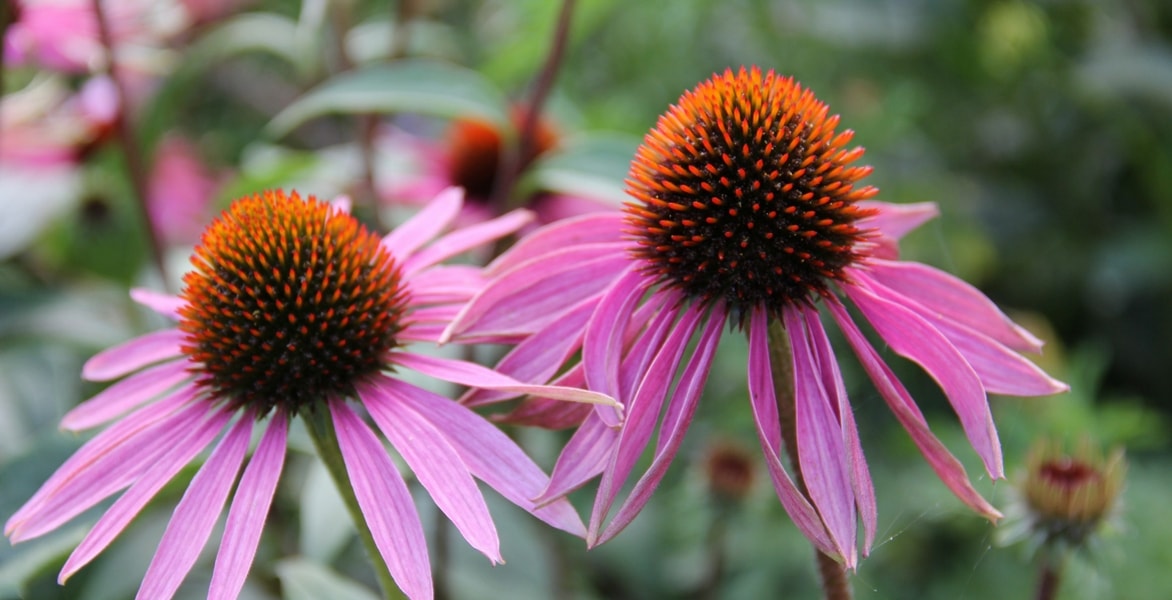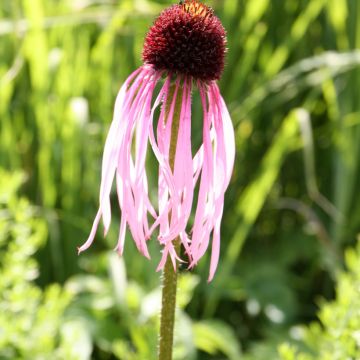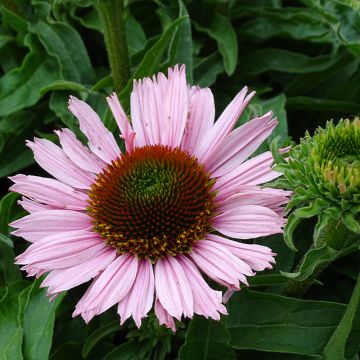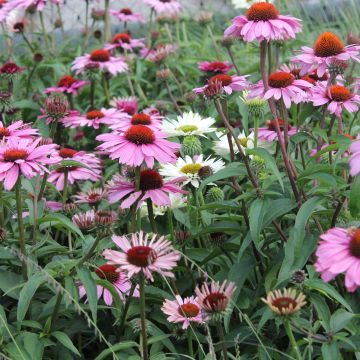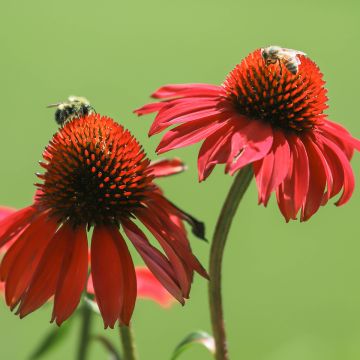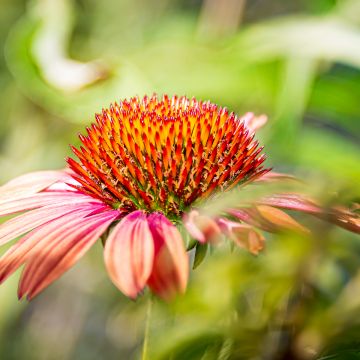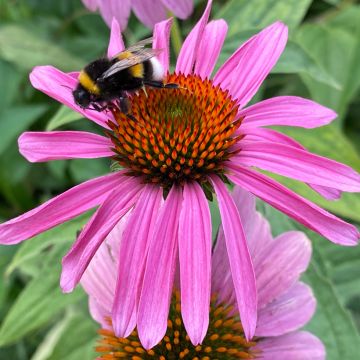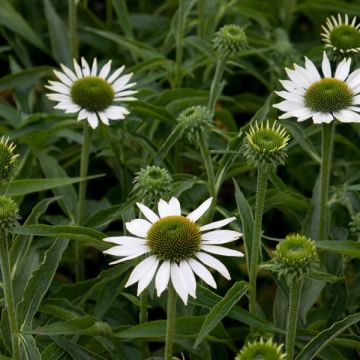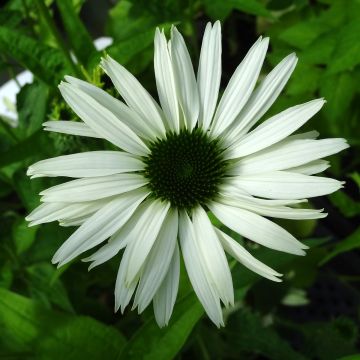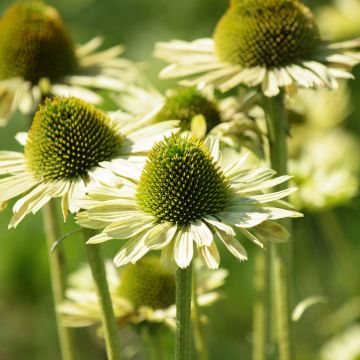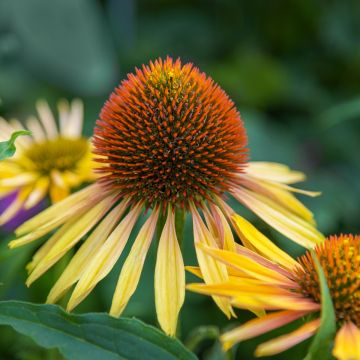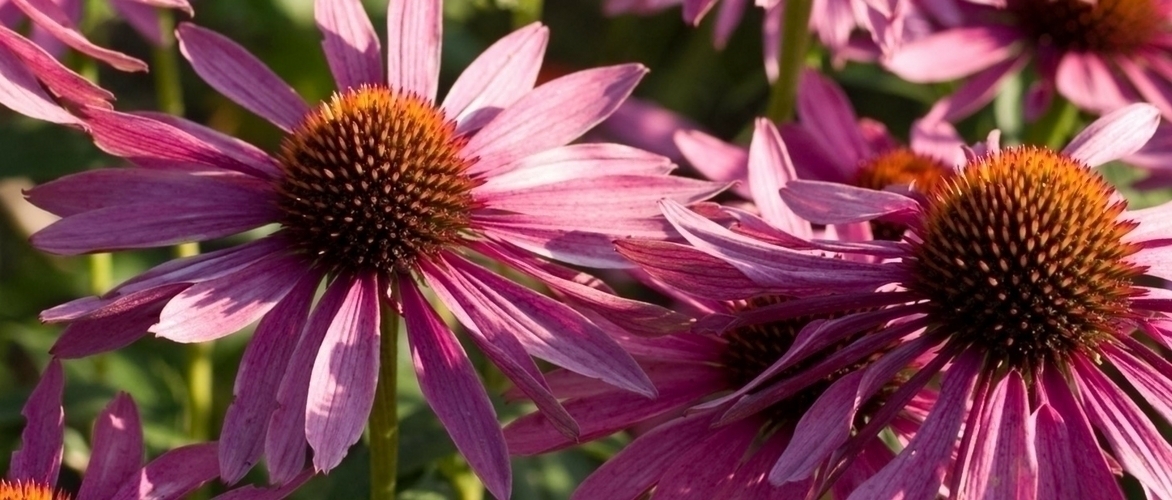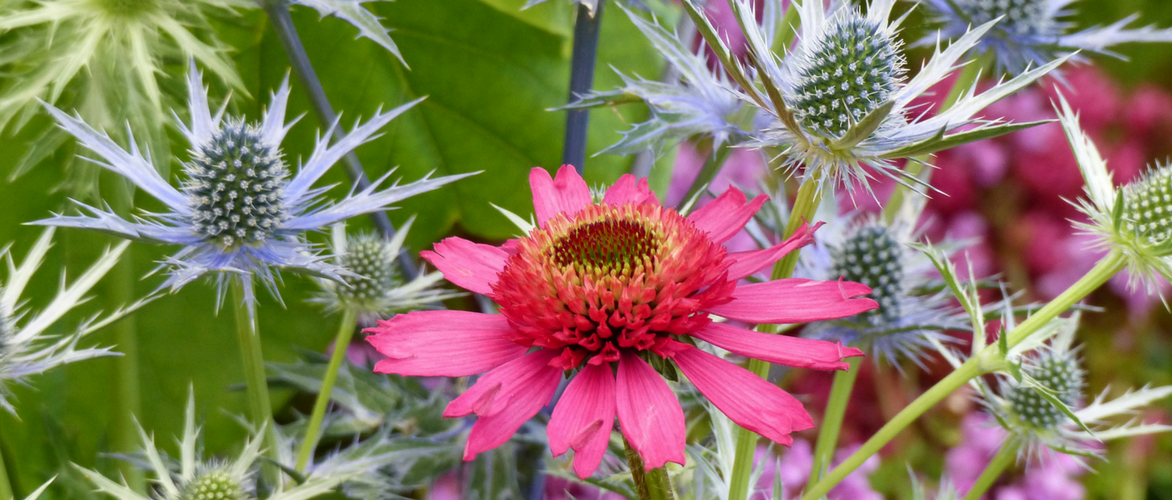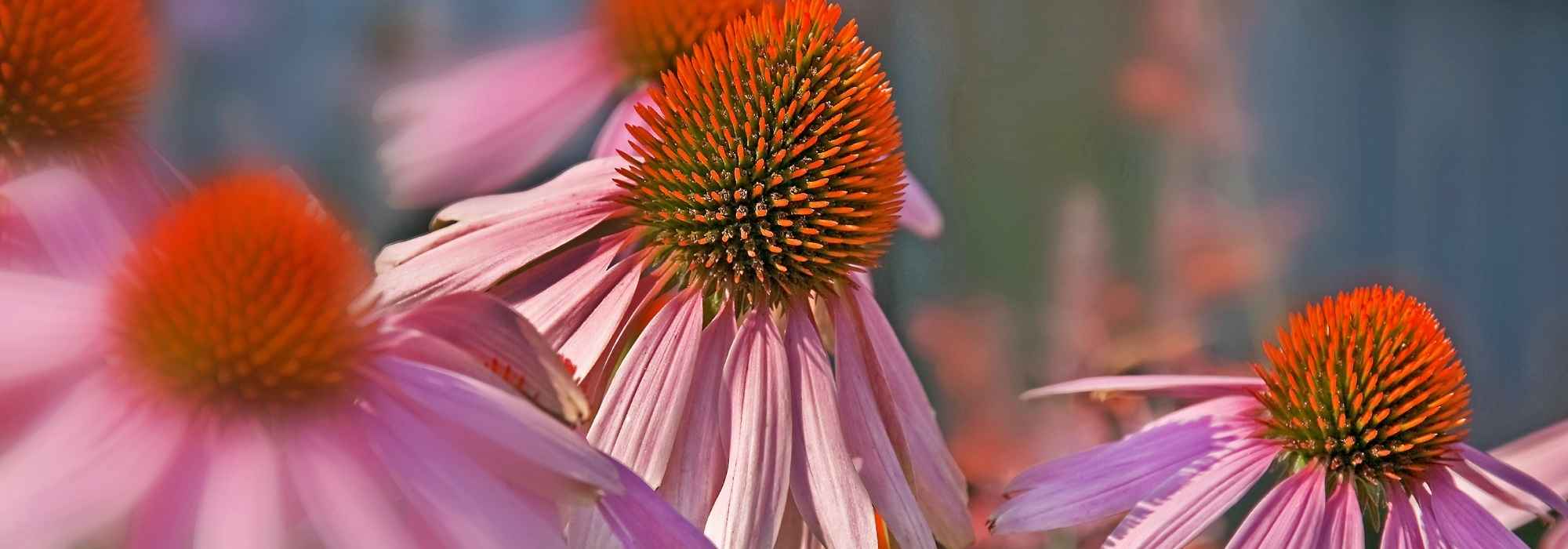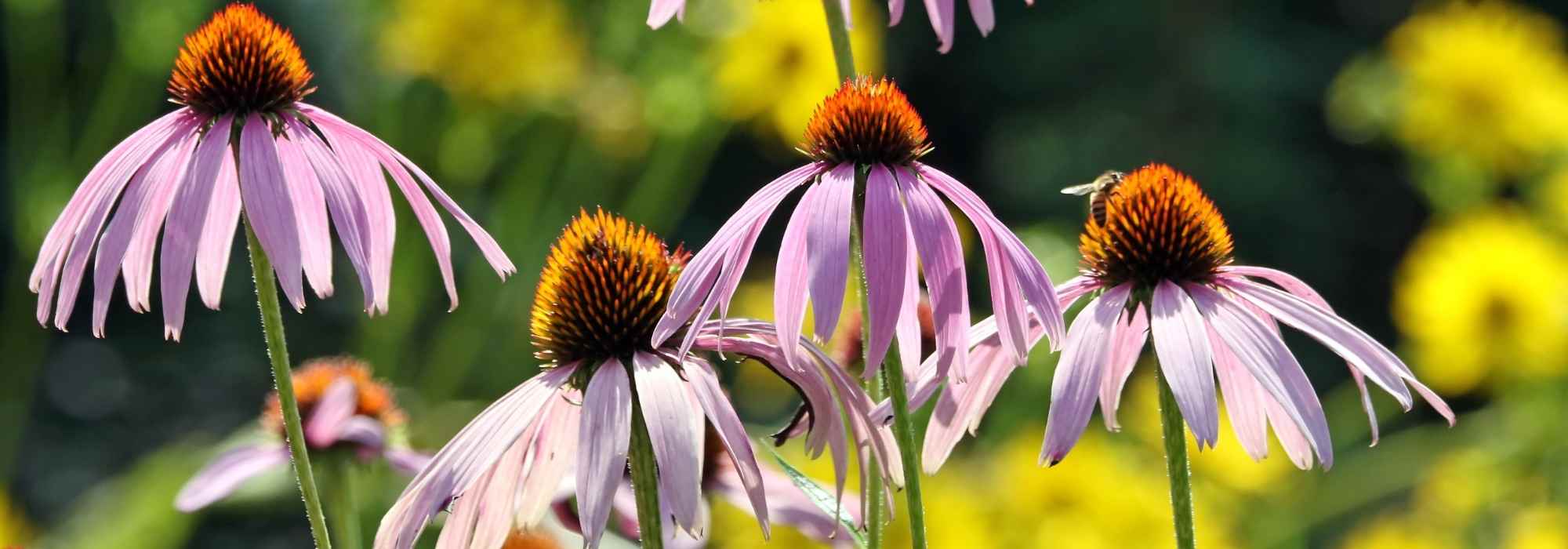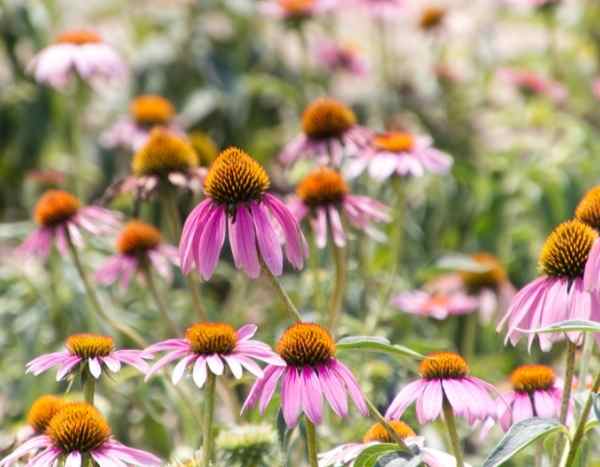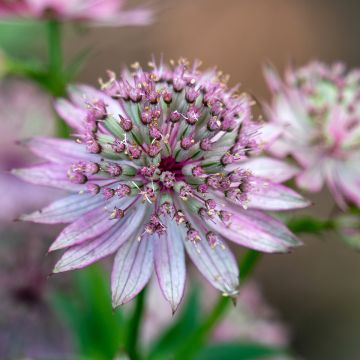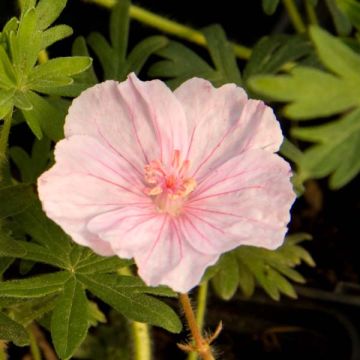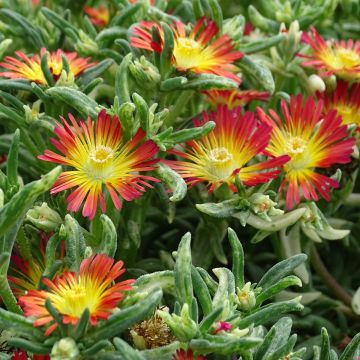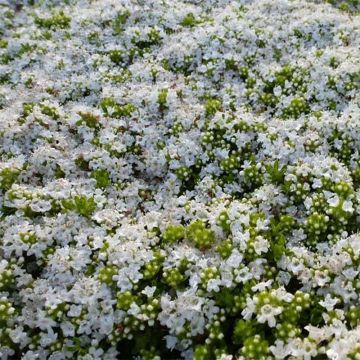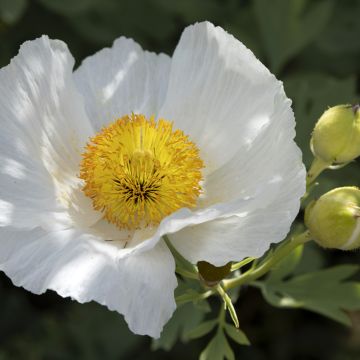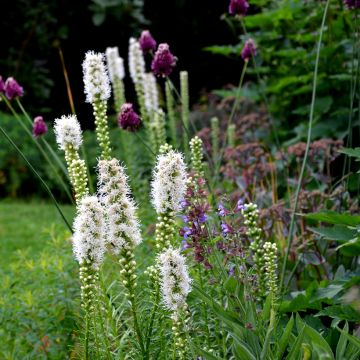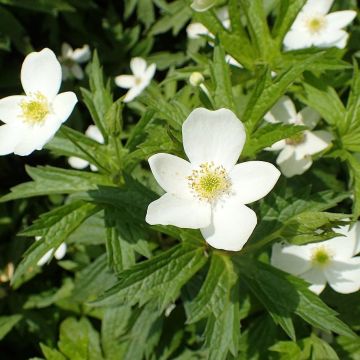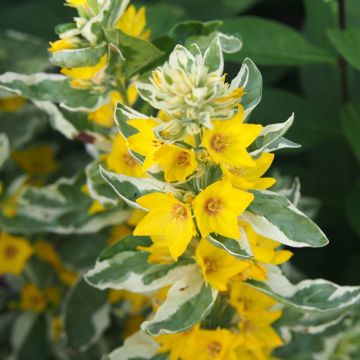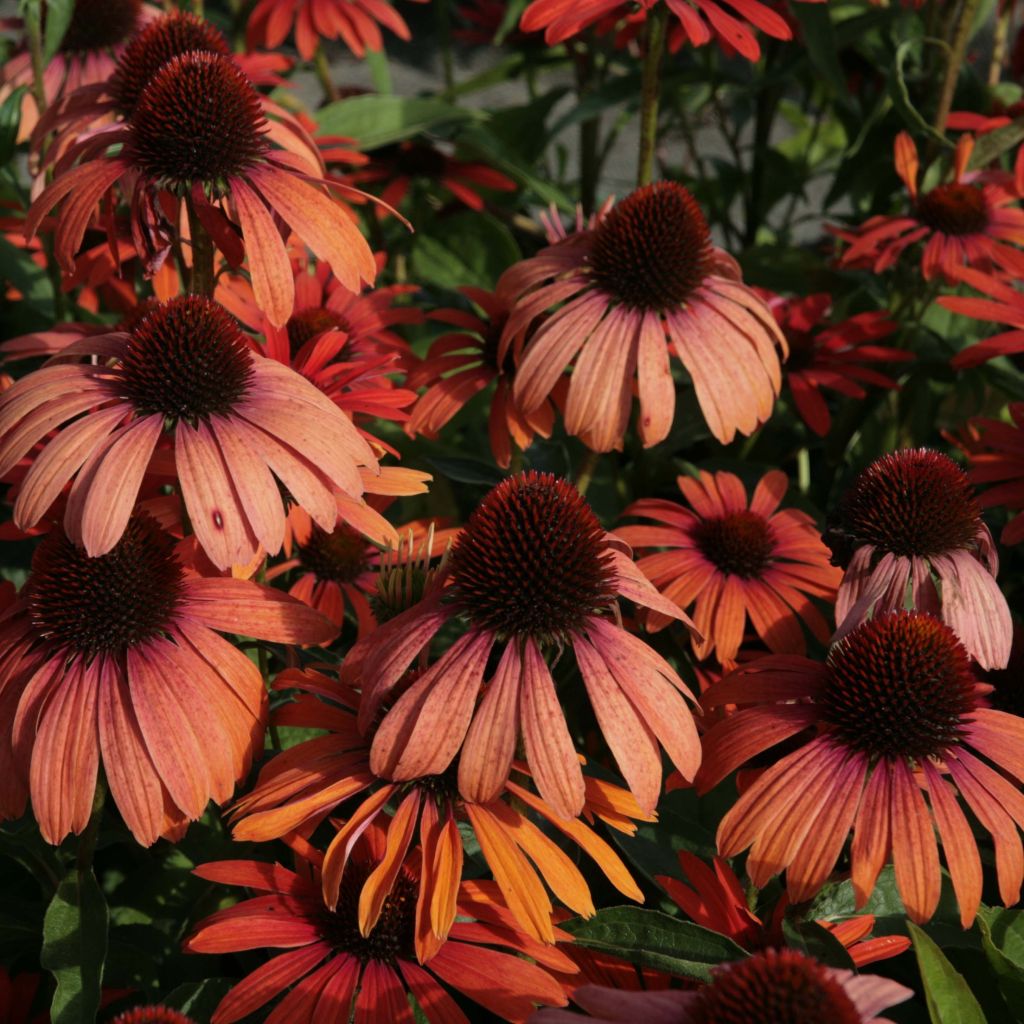

Echinacea Julia - Purple Coneflower
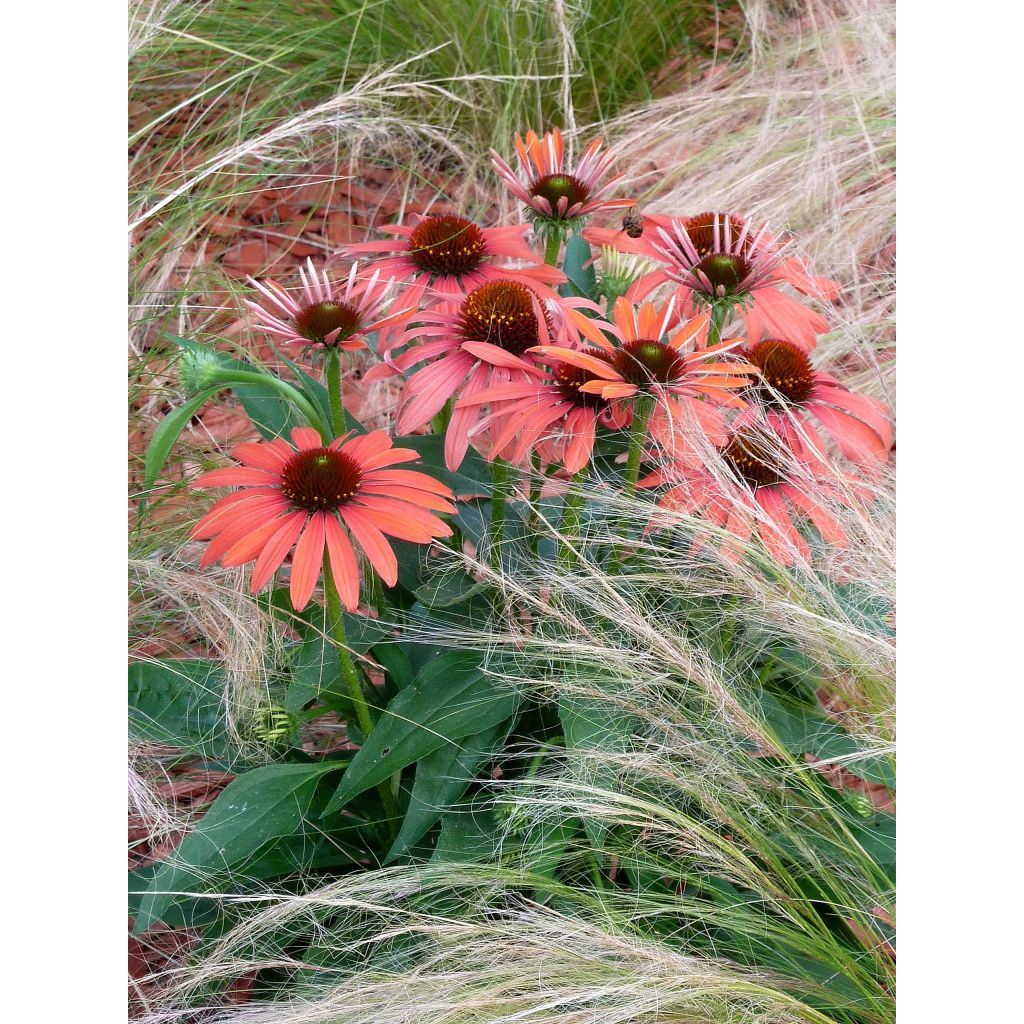

Echinacea Julia - Purple Coneflower
Echinacea Julia - Purple Coneflower
Echinacea x purpurea Julia
Purple Coneflower, Eastern Purple Coneflower
Hello, The flowers have grown and bloomed very well, but the height of 80cm and the pink color do not match the description. I had to move everything for the balance of the flower bed.
Patrick , 20/01/2025
Special offer!
Receive a €20 voucher for any order over €90 (excluding delivery costs, credit notes, and plastic-free options)!
1- Add your favorite plants to your cart.
2- Once you have reached €90, confirm your order (you can even choose the delivery date!).
3- As soon as your order is shipped, you will receive an email containing your voucher code, valid for 3 months (90 days).
Your voucher is unique and can only be used once, for any order with a minimum value of €20, excluding delivery costs.
Can be combined with other current offers, non-divisible and non-refundable.
Home or relay delivery (depending on size and destination)
Schedule delivery date,
and select date in basket
This plant carries a 12 months recovery warranty
More information
We guarantee the quality of our plants for a full growing cycle, and will replace at our expense any plant that fails to recover under normal climatic and planting conditions.
Would this plant suit my garden?
Set up your Plantfit profile →
Description
Echinacea 'Julia' is a new variety of small-sized hybrid coneflower, well-branched, that seduces with the orange colour of its flowering, rich and changing, somewhat reminiscent of the bright colour of the wings of the eponymous American butterfly, Dryas iulia. With its large flower heads ranging from pink-orange to golden mandarin orange, centered on a beautiful cone tinged with bright orange and brown, this variety brings life to sunny borders or flower pots like few perennials can. It is also a very resistant plant, adapting to difficult conditions, occasionally tolerating intense heat, humidity, and drought. It can even grow in poor soils.
Native to the western United States, from Georgia to Michigan through Oklahoma and Ohio, Echinacea purpurea is a perennial with a strong character that resembles nothing known, but confidently colonizes rocky prairies, savannas, open woodlands, and road edges in its natural habitat. It has produced numerous cultivars with varied colors and sizes through hybridization with other species, always very easy to grow. All these plants belong to the aster family.
'Julia' has a compact habit with a well-branched clump from the base, particularly sturdy, reaching 45cm (18in) in height and 35-40cm (14-16in) in width. This plant demonstrates very good stability and does not require staking. The opposite, lanceolate green leaves are covered in rough hairs. Flowering occurs from July to September, and the flowers are slightly fragrant and highly visited by butterflies. The branched, green-red stems end with a solitary inflorescence, a 10cm (4in) diameter flower head, with a prominent, bristly, reddish-brown to orange disk, surrounded by slightly trailing ligulate florets whose orange colour changes as the flowers mature while maintaining their brightness. The fruit is an achene that releases seeds that birds are fond of. This plant firmly and deeply anchors itself in the soil with its well-developed root system.
When in bloom, Echinacea 'Julia' blends into a cloud of butterflies, offering a remarkably colourful flowering that brings a lot of dynamism and cheerfulness to even the most modest setting. It is used in mixed borders with other white varieties or in the company of easy and generous annuals such as Nigella, Poppies, Amaranths, or Centaureas. Complete the scene by mixing in some ornamental grasses like Stipa tenuifolia, Schizachyrium scoparium 'Blue Heaven', Muhlenbergia capillaris... These are splendid in mixed borders, and the beautiful colours of the purple Echinacea 'Julia' are also stunning in fresh or dried flower arrangements. Its combination with common lady's mantle is superb!
Properties: In homeopathy, its root is used to combat colds and strengthen the immune system. These properties were already used by Native Americans. The name Echinacea comes from the Greek echinos, which means "hedgehog-like or prickly," and acea, meaning "having the shape of," alluding to the flower heads. Purpurea means "purple."
Echinacea Julia - Purple Coneflower in pictures
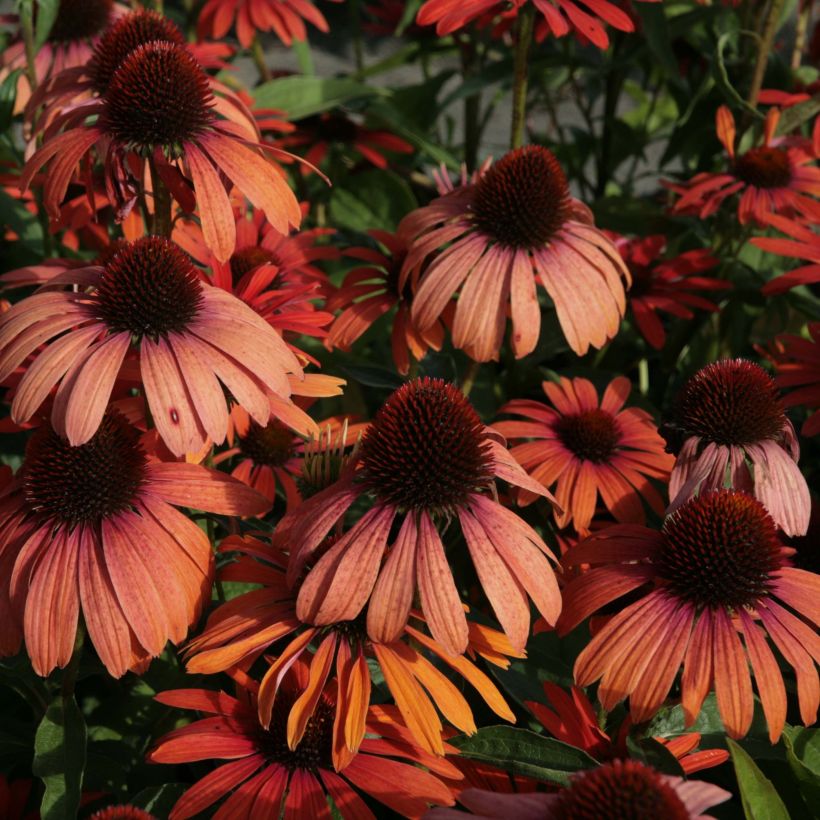

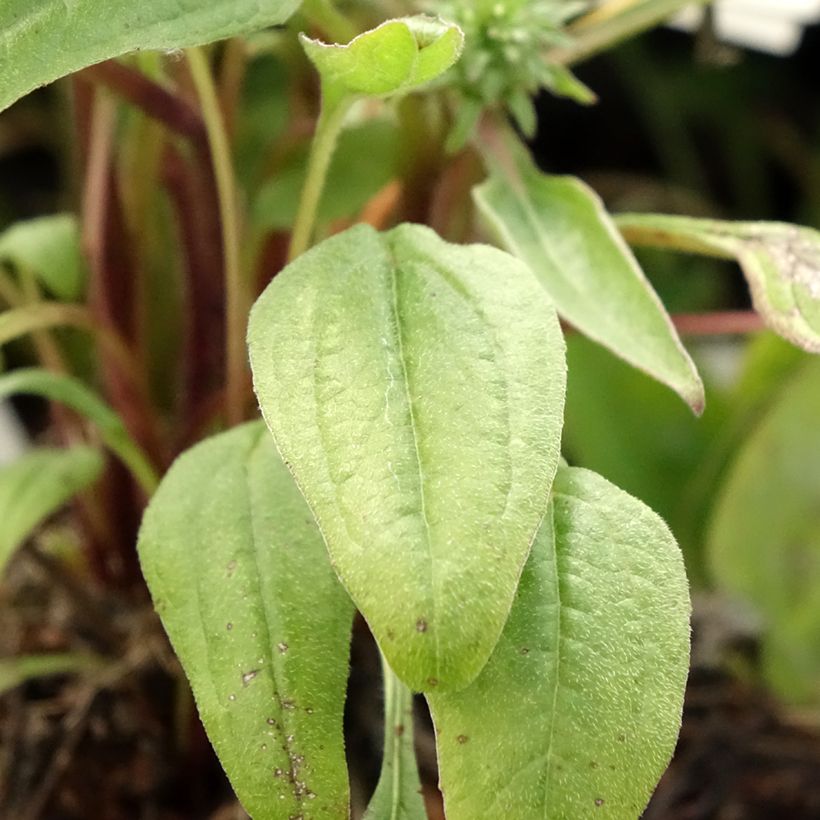

Flowering
Foliage
Plant habit
Botanical data
Echinacea
x purpurea
Julia
Asteraceae
Purple Coneflower, Eastern Purple Coneflower
Cultivar or hybrid
Other Echinacea - Coneflower
View all →Planting and care
Echinacea takes its time to settle; indeed, its growth is rather slow. But in return, once in place, it requires no special care and is very resistant to pests and diseases. It is preferably planted in spring, in a sunny location, in a mixture of potting soil and garden soil. The soil must be deep and loose to accommodate its root system, but it fears waterlogged soils in winter that make it disappear. Cut off the faded flowers as they appear. Divide the clump when flowering slows down. It is a plant with rootstock that can become invasive if it likes its environment. As the plant ages, it becomes more susceptible to aphid attacks and powdery mildew. Mulch the base in May to keep it cool in summer, as it fears water shortage during flowering.
Planting period
Intended location
Care
Planting & care advice
-
, onOrder confirmed
Reply from on Promesse de fleurs
Similar products
Haven't found what you were looking for?
Hardiness is the lowest winter temperature a plant can endure without suffering serious damage or even dying. However, hardiness is affected by location (a sheltered area, such as a patio), protection (winter cover) and soil type (hardiness is improved by well-drained soil).

Photo Sharing Terms & Conditions
In order to encourage gardeners to interact and share their experiences, Promesse de fleurs offers various media enabling content to be uploaded onto its Site - in particular via the ‘Photo sharing’ module.
The User agrees to refrain from:
- Posting any content that is illegal, prejudicial, insulting, racist, inciteful to hatred, revisionist, contrary to public decency, that infringes on privacy or on the privacy rights of third parties, in particular the publicity rights of persons and goods, intellectual property rights, or the right to privacy.
- Submitting content on behalf of a third party;
- Impersonate the identity of a third party and/or publish any personal information about a third party;
In general, the User undertakes to refrain from any unethical behaviour.
All Content (in particular text, comments, files, images, photos, videos, creative works, etc.), which may be subject to property or intellectual property rights, image or other private rights, shall remain the property of the User, subject to the limited rights granted by the terms of the licence granted by Promesse de fleurs as stated below. Users are at liberty to publish or not to publish such Content on the Site, notably via the ‘Photo Sharing’ facility, and accept that this Content shall be made public and freely accessible, notably on the Internet.
Users further acknowledge, undertake to have ,and guarantee that they hold all necessary rights and permissions to publish such material on the Site, in particular with regard to the legislation in force pertaining to any privacy, property, intellectual property, image, or contractual rights, or rights of any other nature. By publishing such Content on the Site, Users acknowledge accepting full liability as publishers of the Content within the meaning of the law, and grant Promesse de fleurs, free of charge, an inclusive, worldwide licence for the said Content for the entire duration of its publication, including all reproduction, representation, up/downloading, displaying, performing, transmission, and storage rights.
Users also grant permission for their name to be linked to the Content and accept that this link may not always be made available.
By engaging in posting material, Users consent to their Content becoming automatically accessible on the Internet, in particular on other sites and/or blogs and/or web pages of the Promesse de fleurs site, including in particular social pages and the Promesse de fleurs catalogue.
Users may secure the removal of entrusted content free of charge by issuing a simple request via our contact form.
The flowering period indicated on our website applies to countries and regions located in USDA zone 8 (France, the United Kingdom, Ireland, the Netherlands, etc.)
It will vary according to where you live:
- In zones 9 to 10 (Italy, Spain, Greece, etc.), flowering will occur about 2 to 4 weeks earlier.
- In zones 6 to 7 (Germany, Poland, Slovenia, and lower mountainous regions), flowering will be delayed by 2 to 3 weeks.
- In zone 5 (Central Europe, Scandinavia), blooming will be delayed by 3 to 5 weeks.
In temperate climates, pruning of spring-flowering shrubs (forsythia, spireas, etc.) should be done just after flowering.
Pruning of summer-flowering shrubs (Indian Lilac, Perovskia, etc.) can be done in winter or spring.
In cold regions as well as with frost-sensitive plants, avoid pruning too early when severe frosts may still occur.
The planting period indicated on our website applies to countries and regions located in USDA zone 8 (France, United Kingdom, Ireland, Netherlands).
It will vary according to where you live:
- In Mediterranean zones (Marseille, Madrid, Milan, etc.), autumn and winter are the best planting periods.
- In continental zones (Strasbourg, Munich, Vienna, etc.), delay planting by 2 to 3 weeks in spring and bring it forward by 2 to 4 weeks in autumn.
- In mountainous regions (the Alps, Pyrenees, Carpathians, etc.), it is best to plant in late spring (May-June) or late summer (August-September).
The harvesting period indicated on our website applies to countries and regions in USDA zone 8 (France, England, Ireland, the Netherlands).
In colder areas (Scandinavia, Poland, Austria...) fruit and vegetable harvests are likely to be delayed by 3-4 weeks.
In warmer areas (Italy, Spain, Greece, etc.), harvesting will probably take place earlier, depending on weather conditions.
The sowing periods indicated on our website apply to countries and regions within USDA Zone 8 (France, UK, Ireland, Netherlands).
In colder areas (Scandinavia, Poland, Austria...), delay any outdoor sowing by 3-4 weeks, or sow under glass.
In warmer climes (Italy, Spain, Greece, etc.), bring outdoor sowing forward by a few weeks.






























